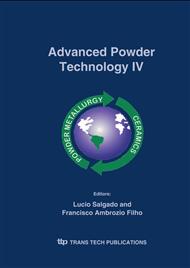p.73
p.79
p.86
p.93
p.98
p.104
p.111
p.119
p.125
An Investigation on the Corrosion Behaviour of Nd-Fe-B Magnets in a Chloride Solution
Abstract:
In this study, the corrosion behaviour of a sintered commercial Nd-Fe-B magnet has been investigated in naturally aerated and deaerated 3.5 (m/v)% sodium chloride solutions. Magnetized specimens were used in this investigation. The corrosion behaviour of the specimens was monitored at increasing test times by means of electrochemical impedance spectroscopy (EIS). Potentiodynamic polarization curves and surface observation by scanning electron microscopy (SEM), were also carried out after 30 days of immersion in the test solutions. Experimental results indicated that the corrosion resistance was affected by aeration of the solution. The corrosive attack penetrates deeply into the specimens and, consequently, the magnetic properties decreased with immersion time. The magnetic properties most influenced by corrosion were the remanence (Br) and the maximum energy product (BHmax), both presenting a reduction corresponding to 6%, after 30 days of immersion.
Info:
Periodical:
Pages:
98-103
Citation:
Online since:
November 2005
Authors:
Keywords:
Price:
Сopyright:
© 2005 Trans Tech Publications Ltd. All Rights Reserved
Share:
Citation:


